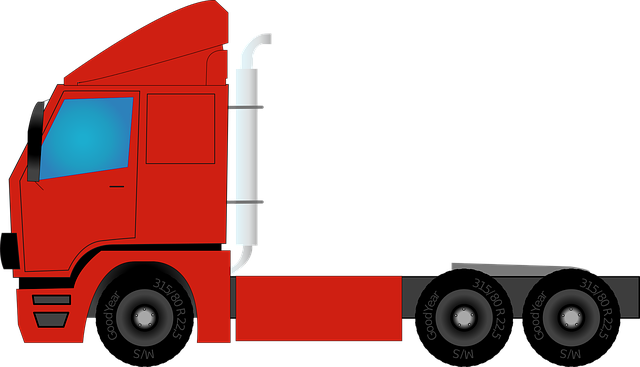Registering a Car in California: Step-by-Step Guide with DMV VIN Verification
Registering a car in California involves several straightforward steps. First, understand the state’s requirements for car registration, which include proof of insurance and identification. Next, gath…….

Registering a car in California involves several straightforward steps. First, understand the state’s requirements for car registration, which include proof of insurance and identification. Next, gather essential documents for DMV VIN verification, including your vehicle’s unique identifier. Schedule a visit to a local California DMV office, complete the registration application, pay applicable fees, and receive your official registration documents. Ensure everything is in order to avoid delays in this crucial process.
- Understand the Requirements for Car Registration in California
- Gather Necessary Documents for DMV Vin Verification
- Schedule and Visit a California DMV Office
- Complete the Vehicle Registration Application Process
- Pay the Required Fees and Receive Your Registration Documents
Understand the Requirements for Car Registration in California

Before registering your car in California, it’s crucial to understand the specific requirements. The California Department of Motor Vehicles (DMV) mandates several key steps for car registration, including accurate and up-to-date information on your vehicle. One essential component is a valid Vehicle Identification Number (VIN) verification, which can be completed through a mobile vin verifier or mobile vin inspection service to ensure the vehicle’s history aligns with its current condition.
Additionally, you’ll need proper documentation, such as proof of ownership and insurance, along with any applicable fees. The DMV provides detailed guidelines on what documents are required for registration, ensuring your vehicle complies with safety standards and environmental regulations. This process is designed to safeguard both public safety and consumer rights in the Golden State.
Gather Necessary Documents for DMV Vin Verification

Before heading to the California DMV for registration, ensure you have all necessary documents ready. The first step in the process is the dmv vin verification, which requires a vehicle’s unique Vehicle Identification Number (VIN). Gather important paperwork such as the title or registration from the previous state, your driver’s license, proof of insurance, and a valid driver’s license. Additionally, for a smoother process, consider having a mobile vin inspection done to verify your VIN before visiting the DMV. This can be arranged through various mobile vin verifier services that offer convenient, on-site inspections.
Having these documents prepared will significantly expedite your car registration in California. Remember, the dmv vin verification is a critical step, ensuring that your vehicle’s history is accurately checked against records. By being organized and proactive with your documentation, you can ensure a stress-free experience during one of the most important processes for owning a vehicle in this state.
Schedule and Visit a California DMV Office

To begin the car registration process in California, the first step is to schedule and visit a DMV office. You can do this online or by phone, making sure to choose an available time slot. Upon arrival at your chosen DMV location, be prepared with essential documents such as proof of ownership, identification, and any required fees. The staff will guide you through the registration process, which includes a critical step: VIN verification. This involves checking the Vehicle Identification Number (VIN) to ensure its accuracy and match it against the vehicle’s make, model, and year.
At the DMV, you might also consider using services that offer mobile VIN verification, where a professional comes to your location to perform this inspection, saving you time and potential trips back and forth. This is especially beneficial for those who are busy or have limited mobility. Remember, accurate VIN information is crucial for completing the registration, so whether you’re doing it in-person or through a mobile verifier, ensuring this detail is correct is essential.
Complete the Vehicle Registration Application Process

To complete the vehicle registration process in California, you’ll need to undergo a crucial step: DMV VIN verification. Start by obtaining an application from the Department of Motor Vehicles (DMV) or downloading it online. Fill out the form accurately, providing detailed information about your vehicle, including its make, model, year, and unique Vehicle Identification Number (VIN). This is where a mobile VIN verification service can be incredibly handy; it allows you to quickly and conveniently get the necessary vehicle history report by utilizing your smartphone or tablet for a smooth inspection process.
Once your application is ready, submit it along with the required documents and fees to your local DMV office. They will verify the VIN using official databases to ensure the vehicle’s identity and condition, comparing it against records of accidents, outstanding loans, or any other issues that might hinder registration. This step is vital to protect both you as a consumer and the state from potential fraud, ensuring only legitimate vehicles are registered on California roads.
Pay the Required Fees and Receive Your Registration Documents

After completing your vehicle’s necessary inspections, such as a smog test, it’s time to pay the required fees and finalize your registration at the DMV. The California Department of Motor Vehicles (DMV) will verify the Vehicle Identification Number (VIN) of your car during this process, ensuring its authenticity and history are accurately recorded. This step involves submitting all the necessary documents and fees, including proof of insurance and any applicable taxes.
You can opt for a traditional in-person visit or leverage modern conveniences by utilizing a mobile VIN verification service. These services allow you to complete the VIN inspection remotely, providing convenience and potentially saving time. Once your application is approved, the DMV will issue your registration documents, allowing you to legally operate your vehicle on California’s roads.
Registering a car in California involves understanding specific requirements, gathering essential documents, visiting a DMV office, completing applications, and paying fees. By adhering to these steps and ensuring accurate DMV VIN verification, you can successfully register your vehicle and hit the roads legally.







